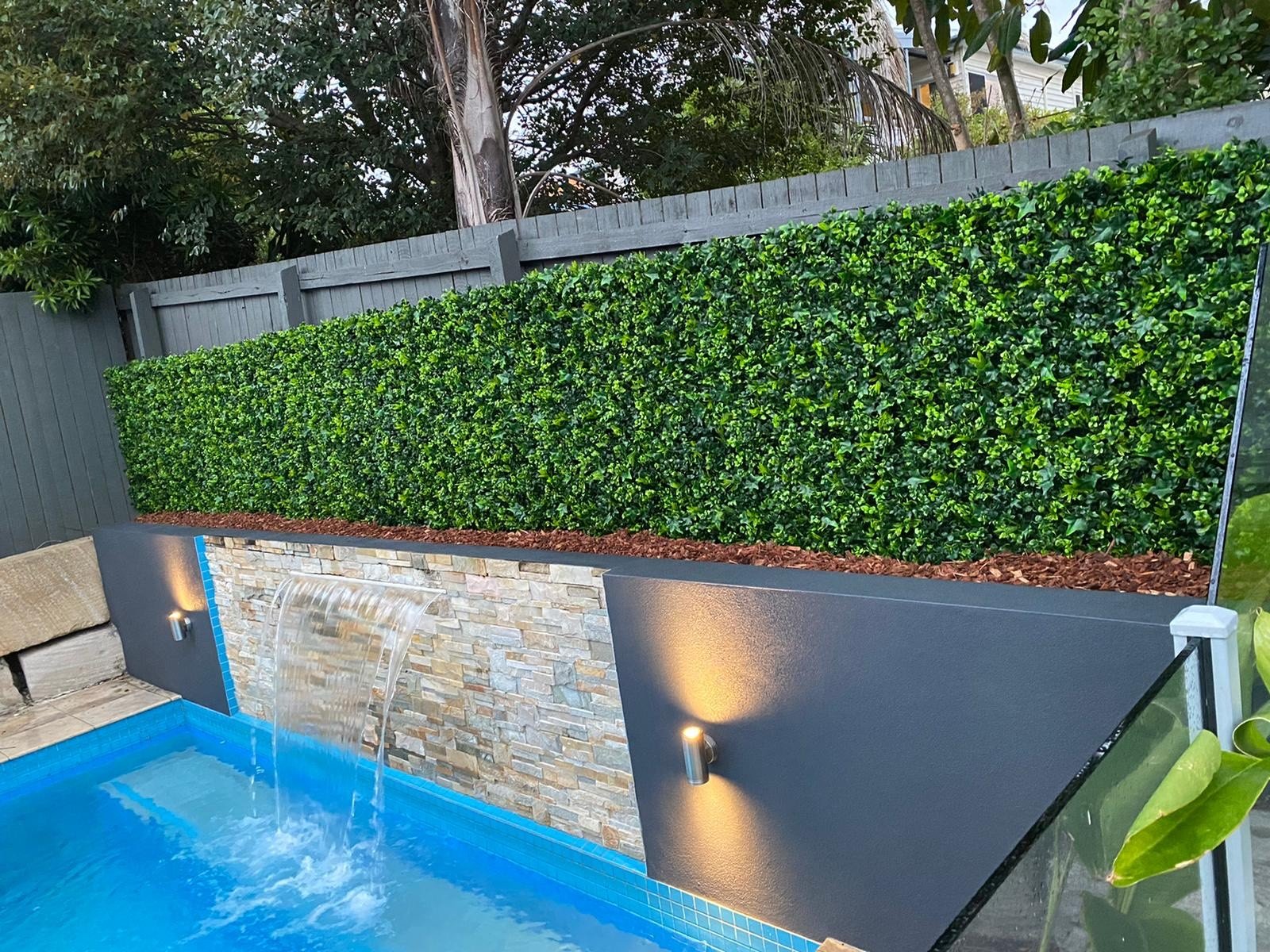By taking a trip down our informational blog, you’ll see it laden with praise and rave reviews about artificial plants.
But we’re not ones for emphasizing the good and sugarcoating the bad aspects of owning fake plants. Sadly, it’s not always sunshine and rainbows because most fauxliage could do without the former.
The most common issue plaguing fake plant parents around the globe is fading. Unlike natural plants that thrive in the sun, direct light is a fake plant’s foe.
So why does fading happen and how do you protect your sanctuary and keep it as vibrant as the day it first graced your home?
We’ll shine a light on the essential details, so let’s begin!
Why Do Artificial Plants Fade Outside?
In some parts of the US, sunlight won’t cause too much of an issue. But we can’t say the same for the sunny south!
As designated Florida residents, we know how hot it can get down here, especially in the summer. And although abundant sunshine is good for the mind and soul, faux trees and green walls will beg to differ.
Of course, this doesn’t concern all fake plants, just the ones sitting outside. Even though artificial plants are more durable and often have a longer lifespan than real plants, they’re still subject to regular wear and tear.
Depending on the weather conditions the plant has been exposed to, it can last anywhere from 2 seasons to upwards of 5 years. For every Designer Plant, our experts can tell you approximately how long your green bundle will brighten your garden. We also have a wide range of UV certified and tested plants that are designed for outdoors.

But why does fading occur?
Many artificial plants are not made with the outdoors in mind- albeit they make look ultra realistic, this does not mean they are UV stable. They’re made from a variety of plastics, silks, wires, fabrics, and natural wood. Inherently, these materials are not resistant to UV light and the sun’s rays break down their pigment. As a result, this leads to discoloration and brittleness and causes the plants to look tired or worn out.
There are however options that are designed to withstand the UV rays from day one, and treatments that can be done to reduce their fading, such as applying a UV resistant protection spray. The product has been developed in house at our Australian division.
Luckily, it’s easy to tell when your precious plants have lost their sparkle. Namely, if your artificial foliage has been exposed to direct light for a while, you’ll notice the green losing some vibrancy. Although it’ll still be green, it’ll be duller than when you first bought it.
But we’ll give you the resources needed to intercept the deteriorating process and keep your faux plants looking as healthy as ever. Spearheading the fight against fading is investing in effective UV protection.
Why Is UV Protection Important?
As we already briefly mentioned, extended exposure to the sun’s rays can be detrimental to your outdoor artificial green wall, tree or plant. But that doesn’t mean you can’t place faux greenery in a sunny spot without seeing it rapidly turning into a glum, limp mess.
In fact, when creating the products, reputable manufacturers frequently weave in UV-resistant materials designed to withstand the sun’s penetrating rays. Although this won’t stop the fading entirely, it will substantially slow it down.
So, if you know that your fake plant will be sunbathing for a longer period, purchase one with a UV-resistant label like our Fern Artificial Green Wall which comes with a lifespan of over 5 years outdoors.
And if you’re more interested in fake topiary plants, you can rest assured knowing that each one is crafted with UV-resistant materials and fashioned to suit every exterior.
How to Keep Artificial Plants from Fading Outside?
But what can you do if you’ve already bought a non-UV-resistant artificial plant? Is your plant baby doomed?
Fortunately, no!
There are still steps you can take to slow down the process and keep your fauxliage looking fresh. Here are some helpful tips:
Put the Fake Plants In a Good Location
The placement of your artificial green wall or decorative plant is arguably the most important decision you’ll have to make.
Namely, you can’t move fake green walls so easily, so if you place them in direct sunlight, they will generally fade faster than when sitting in the shade. If you can, prop your faux greenery in an area that is at least somewhat shielded from extreme weather.

By doing so, you’re extending your fauxliage’s lifespan and ensuring the area stays beautiful for as long as possible. Look for places that provide some shade, such as corner mantels or bookshelves, while verandas and balconies provide excellent spaces for green walls.
Shield the Plants From the Sun
If you’ve already cashed out on artificial plants without built-in UV protection, you’ll need to take additional measures to keep them safe.
To avoid spending a fortune on shading, place an outdoor umbrella over the plants. Not only is this option cost-effective, but it’s also highly versatile. In fact, it allows you to move both the plant and the shade with ease and beautify different locations in your garden.
And for shielding fake green walls?
You can purchase a well-made, high-quality awning that will not only protect the wall from rain, wind, sun, and snow, but it will also serve as an eye-catching feature and pull the space together. Place some patio furniture under it and enjoy your morning coffee surrounded by luscious plants.
Clean the Artificial Plants Often
To keep your artificial plants looking their best, make sure to clean them regularly. If you skip this crucial step, the build-up of dirt and dust will dull their shine and lead to them fading well before their time. Although you should clean your greenery monthly, you’ll need to give them extra love in the summer.
If the plants have been exposed to harsh weather conditions, handle them with care because they may have weakened. Depending on the level of dust build-up, try using a feather duster first. If that fails, remove the dust and small particles with a moistened rag and gentle dish soap. Rinse with a clean rag and allow the leaves to air dry.
But to ensure you’re cleaning your fake plants the right way, contact us for specifics concerning your chosen product. Just like real plants, faux gardens require diverse methods for effective maintenance.
Spray the Plants With UV-Protecting Spray
Even if you purchased faux plants without built-in UV protection and materials that don’t lend themselves to exposure to the elements, you can seek out designated UV-protecting sprays to do the job.

UV-resistant sprays work best when sprayed evenly and generously across the entire plant, including the stems and branches. There are many sprays to choose from, so don’t shy away from doing research about which one would suit your fake plant best.
But before dousing the plant, test the solution on a few inconspicuous areas, such as the underside of the leaves or the lowest hanging branches to ensure colorfastness.
Depending on the quality of the UV-resistant spray, it can add months or even years to your artificial arrangements, so long as you spray liberally and clean the plant beforehand.
Rotate the Plants Regularly
If your artificial plant looks best in an area that gets significant sunlight, you can minimize the sun’s impact by frequently rotating your plants.
Of course, this won’t work for artificial green walls, but it can be a godsend for faux trees, shrubs, or flowers. Namely, you can rotate the plant itself every month or so to ensure that each side gets almost the same amount of exposure. This way, even if the plant fades, it will be uniform.
Alternatively, if your living space allows it, you can move your faux arrangements to different locations inside or outside the home. By doing so, your fake plants will either briefly bask in the sun at different angles or brighten another area completely untouched by natural light.
Closing Notes
When choosing your artificial plants remember it is sometimes better to invest a little more into your artificial plants upfront to reduce the life-time costs of having to replace your fauxliage. Choosing a manufacturer who understands UV resistance and makes high quality UV resistance foliage will always save you more in the long-run. Though, in the event you do have indoor plants that are fading options such as spraying, moving them or rotating can always assist as a temporary measure.


